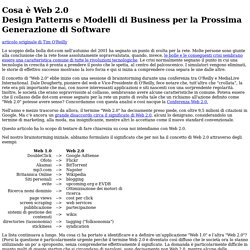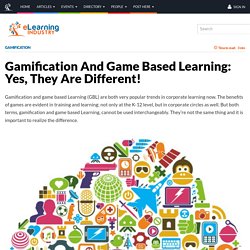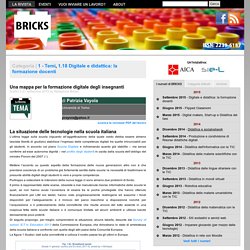

Cos'è il web 2.0 - XYZ Reply. Articolo originale di Tim O'Reilly.

Applicazioni Educative: Video Tutorial e Video Guide. Anno Di Prova Neo Immessi in Ruolo - Risorse. Applicazioni Educative: Videotutorial italiano. Articoli Didattica, Tac, e-learning inglese. Content Curation - Cura dei Contenuti. Digital Storytelling - Narrazione Digitale. Information Overload e Big Data.
Web e conoscenza. Metodologie Didattiche e Tecnologie dell'Apprendimento. DSA - BES: Didattica e legislazione. Podcast - Audio digitale e Web. Apprendimento significativo mediato dalla tecnologie. Abstract Le continue e complesse trasformazioni che caratterizzano la “liquidità” della società attuale, generano, rispetto al passato, nuovi valori e stili di vita, che determinano un cambiamento delle modalità conoscitive e comunicative dell’individuo.

In questa nuova prospettiva sociale la visione costruttivista del sapere, in particolare quella del costruttivismo socio-culturale, fornisce una risposta affinché l’individuo possa divenire protagonista responsabile della sua crescita personale e sociale, attraverso un impegno durevole per tutto l’arco della vita. Uso de TICs y TACs en la Educación by Olga Mendoza on Prezi. TICs y TACs: Un Paso Necesario - ExamTime. Cuando hablamos de conceptos relacionados con las nuevas tecnologías y la educación, las TICs y TACs son lo primero que nos viene a la mente.

Pero, ¿sabemos realmente qué significan y cómo usarlas en nuestro día a día? Las TICs El término TICs es la abreviación de tecnologías de la información y la comunicación y se refiere al conjunto de avances que tenemos a nuestra disposición. Un ejemplo de herramientas TICs podría ser ExamTime, que permite crear, compartir y descubrir todo tipo de recursos de estudio. Pero éste no es el único ejemplo. El problema de las TICs es que en muchas ocasiones el docente no sabe cómo implementarlas en su proceso de enseñanza o, directamente, carece de las habilidades básicas necesarias para su uso. Es en este escenario donde las TACs entran en juego. Las TACs El término TACS es la abreviación de tecnologías del aprendizaje y el conocimiento. 12 Emerging Educational Uses of Technology That Are Most Exciting Right Now. Well, it's that time of year again … the start of a new school year.

With it often comes the irresistible urge to make another list, or even better … many lists! Lists help us to plan, and they can also help us reflect and assess. One list I really enjoy putting together as we head into a new academic year is an updated look at which educational uses of technology have shown the most promise over the last year. Which tools and techniques most excite me as I look forward to another year of striving for continuous improvement as a teacher, technologist, and #edtech advocate?
And as different technology uses take the spotlight, which of them are standing out a little less? So, looking back and thinking forward, here are a dozen instructional uses of technology that are the most compelling right now. Augmented Reality AR is just so much fun and comes in many different flavors. Gamification And Game Based Learning: Yes, They Are Different! Gamification and game based Learning (GBL) are both very popular trends in corporate learning now.

The benefits of games are evident in training and learning; not only at the K-12 level, but in corporate circles as well. But both terms, gamification and game based Learning, cannot be used interchangeably. They’re not the same thing and it is important to realize the difference. With evolution of technology, there is continuous evolution in technology-aided learning as well. New ways of imparting continuous learning is now a priority for most organizations who realize the worth of effective learning within the workspace. In simple terms, game based learning using a unique game or simulation to cater to the evident learning needs of a group. Gamification, on the other hand, is the process of applying game based elements or mechanics to existing learning platforms or content to increase learner interest and motivation.
Una mappa per la formazione digitale degli insegnanti. Scarica la versione PDF del lavoro La situazione delle tecnologie nella scuola italiana L’ultima legge sulla scuola (riguardo all’aggettivazione della quale credo debba essere almeno lasciata libertà di giudizio) stabilisce l’ingresso delle competenze digitali tra quelle irrinunciabili per gli studenti, in accordo col piano Scuola Digitale e richiamando quanto già stabilito – ma senza conferire ad esse autonoma dignità – nel profilo degli studenti in uscita dalla scuola dell’obbligo del ministro Fioroni del 2007 (1).

Mettere l’accento su questo aspetto della formazione delle nuove generazioni altro non è che prendere coscienza di un problema già fortemente sentito dalla scuola: la necessità di trasformare le presunte abilità digitali degli studenti in vere e proprie competenze. Purtroppo a ostacolare le intenzioni della nuova legge ci sono almeno due problemi di fondo. Figura 1 – Dati sulla connettività. Figura 2 – Dati sull’incremento del numero di computer per ogni 100 studenti. 1. 2. 3. Seven Ways to Recycle eLearning Video Content by John Parsons. Using interactive video for eLearning and mLearning is an exciting, thought-provoking trend.

Moving beyond our preconceived notions about video, namely that it’s too boring and/or costly, is a potential game changer. Creating, recycling, and combining smaller “chunks” of content could potentially solve some important problems for developers. Learning and development professionals are increasingly using interactive online video to supplement or even replace their eLearning courseware. However, we often have a too narrow view of what “video” means. It’s either a recorded lecture equivalent (long and boring) or a full production with storyboards, scripts, actors, titles, and post-production (long and expensive).
It’s time to re-imagine video—as a series of short (or very short) pieces, to combine, use, and especially reuse to promote good learning outcomes. Pre-cycle: Instead of recording video as a single “blob” of content, create smaller clips, each containing a single idea or concept. A TPACK-based Approach for An Effective Integration of Technology in Your Teaching. August 11, 2015 Technology is definitely a game changer in today’s classroom.

Its pervasive widespread in educational settings speaks volumes about the growing importance we come to place in it. However, while many teachers have already domesticated some of this technology into their daily workflow (e.g, preparing handouts and docs, creating lesson plans, communicating with students and parents…etc) a pragmatic leverage of this technology for instructional purposes remains barely noticeable. By pragmatic leverage we mean the use of technology to enhance key cognitive skills such as higher order thinking skills, critical thinking skills, and problem solving to mention a few.Technology integration in this sense is not an end in and by itself by a means, a roadmap to facilitate teaching and learning. Working towards a student-centerer pedagogy where technology is used effectively to create optimal learning experiences for students mandates careful planning and strategic execution. Evolution of Note Taking: New Forms. Note taking is a big topic among educators.

How do we teach it to our students?